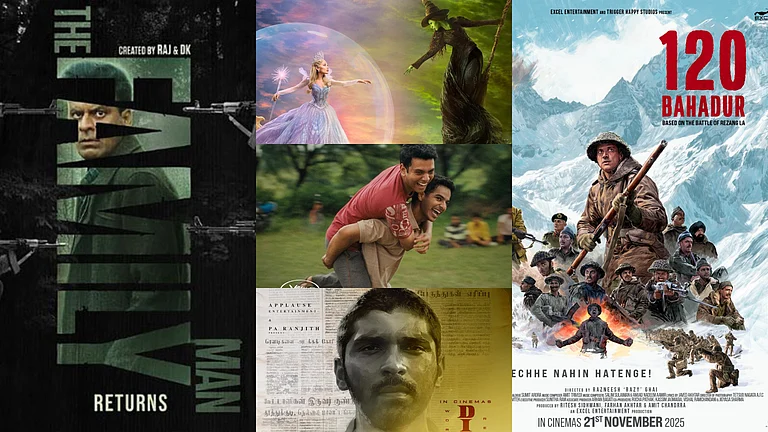
Directed and written by Imtiaz Ali, edited by Aarti Bajaj, Tamasha (2015) released on 27 November 2015.
The film stars Ranbir Kapoor and Deepika Padukone in lead roles in one of their most acclaimed collaborations.
Tamasha at 10 invites a revisit that examines its evolving cultural legacy and the renewed attention it commands a decade later.
As Imtiaz Ali’s Tamasha (2015) completes a decade, its afterlife invites a closer look at how certain films shift meaning, depending on who we are when we encounter them. Its central ideas—conformity, selfhood and an oddly persistent faith in love—have ensured that audiences return to it even after agreeing, at various points, that they admired it, disliked it, or simply did not know what to do with it.
What has grown around the film is a fandom with its own curious reputation. It is often framed as a gatekeeping collective that treats the film as an exclusive emotional event, available only to those who claim to “feel it correctly.” Yet the audience of Tamasha has never been restricted to cinephiles dissecting syntax; it includes viewers who discovered it years later through OTT thumbnails. Ali once remarked that people canonise his films retrospectively but rarely show up at the theatres when they release. So the question lingers—where does this gap originate?
Ten years on, Tamasha still holds strong recall value because it reshapes itself with each viewing. It invites new interpretations depending on the stage of life from which one approaches it. The film meditates on performance as a human condition, tracing how storytelling has shaped identity across centuries. Even with its sombre, sometimes tormented temperament, Tamasha remains a fiesta of artistry. At its surface, the narrative of the film could be reduced to a familiar template: boy meets girl, they experience transformation and conflict, and eventually converge. Yet Ali’s treatment of this structure elevates it beyond the conventional. Interwoven into the film are his enduring fascinations—music, films and the mechanics of performance—each element reflecting an unguarded gratitude for the very act of filmmaking. In essence, Tamasha becomes a celebration of creative audacity, a filmmaker’s ode to the art form he inhabits.
Ali stays committed to a narrative that mirrors the everyday struggle of individuals trying to negotiate desire and responsibility. The film examines the slow drift into mechanical routines and the erosion of instinct, while placing its characters in an environment that appear familiar to the palette of confused, yearning figures—seen earlier in Love Aaj Kal (2009)—returning here with an added layer of surrealism, amplified by Aarti Bajaj’s incisive editing.

Ved (Ranbir Kapoor) and Tara (Deepika Padukone) meet in Corsica under an agreement to conceal their real identities and speak only through playful role plays. The anonymity frees them and despite knowing the arrangement is transient, they fall for each other. Tara’s rule—“What happens in Corsica stays in Corsica”—holds until they part. Years later, they collide again in India, and the connection resurfaces instantly. The film then examines the tension between falling for an imagined persona and meeting the person beneath that fantasy, as the journey of self discovery converges with the quest to meet the other person where they are.
Ali establishes the film’s philosophy through the storyteller (Piyush Mishra), who reminds the audience that stories repeat across cultures—Ayodhya, Greece, Laila–Majnu, Romeo and Juliet, Alexander, Lanka. Every narrative follows an old blueprint, including the one unfolding before us. He encourages viewers to forget the geography and absorb the tale itself. As Rahman’s “Chali Kahani” begins, the film condenses its thesis into its opening sequence. In those first minutes, Ved appears as a robot and Tara as a joker who disrupts him, catching him before he falls and setting the tone for what follows. The film glides between staged performances and real-world interactions, making the viewer question whether all stories eventually converge. Ali extends the non-linear tendencies he experimented with in Rockstar (2011), offering a satire on lives dictated by societal templates.

Ali has often been accused of reworking the same narrative under different guises. Tamasha responds by turning this critique into its thematic anchor. The film embraces repetition but enhances it through theatricality, imaginative interludes and vivid interior landscapes. Yet Tamasha introduces its own intervention: individuals can renegotiate their endings. The line “Pasand nahi aayi ending? Badal do. Khud ki hi toh kahaani hai” is the film’s central proposition.
The characters serve as conduits rather than heavy psychological portraits, and the performances of the lead pair sustain the film with an energy it consciously avoids over-explaining. From its opening, Tamasha experiments boldly with form. Its story-within-a-story device and theatre-driven structure echo Ali’s stylistic risks, such as the audacity of Amar Singh Chamkila (2024) in the mainstream space. Ved’s psyche is repeatedly visualised through mirrors that divide him into three selves—a robot, a clown and a paralysed in-between self. His conflict does not stem solely from the rejection of conformity; it also emerges from the pressure to be extraordinary. His rebellion collapses when both expectations collide.
The film coalesces childhood, fantasy and adulthood into a layered temporal field that coexists without the linear bounds of time. It also interrogates romanticised memories. Ved’s recollections from childhood tales to the Corsica detour are charming but also highly curated, illustrating how nostalgia can obscure objectivity. Corsica functions as a quiet critique of Bollywood’s long-standing infatuation with Europe as a site of self-discovery.

Interestingly, the film avoids depicting the actual labour of pursuing creative work—an omission many artists will recognise. But the film’s focus arguably isn’t that; it is to confront the biggest obstacle—one’s own internal compass. The storytelling within Tamasha itself is framed less as a creative pursuit and more as an ethical act. Ved’s tales become exercises in truth-telling, compelling him to confront his identity. The film quietly comments on how nonconformist art is discouraged in India, both socially and institutionally.
Tara (Deepika Padukone) is written in almost the format of a manic pixie dream girl who fixes everything. However, she emerges far from that. She articulates her emotions and refuses to hide the intensity of her longing—an inversion of the internalised archetype often given to the “shy” female leads as mentioned before the song “Matargashti”. At the same time, the narrative’s gendered limits show clearly. Tara’s professional and personal world is barely explored. She is positioned as the emotionally exposed figure grappling with a closed-off partner, though she subverts the usual pattern by rejecting Ved when she recognises the illusion she had fallen for. The corporate sphere is not vilified outright; Tara appears functional and satisfied within it, while Ved experiences it as stifling. Their contrasting responses highlight how environments shape people differently. His Don 2 (2011) style re-entry into her office cheekily underscores this distinction.

AR Rahman’s score functions as a temporal map, guiding Ved through conflict, memory, desire and truth-telling. The songs frequently misalign with the narrative tone, creating productive dissonance. The soundtrack continues to unfold new layers with each revisit. “Matargashti” is the narrative’s most playful misdirection. Its buoyant energy hints at freedom, yet it quietly acknowledges that fantasy operates as a provisional escape that’s been negotiated from life. “Heer Toh Badi Sad Hai” articulates Tara’s inner life with unusual precision; it momentarily disrupts the film’s Ved-oriented structure and allows her world to exist without orbiting his.
In a different register, “Tu Koi Aur Hai” examines Ved’s fragmentation, capturing the dissonance between the identity he enacts and the one he suppresses. “Agar Tum Saath Ho” becomes the film’s tonal centre. Tara’s appeal is steady and direct, while Ved’s retreat underlines how emotional presence cannot resolve a deeper rupture within the self. The track crystallises the limits of love when confronted with an unresolved interior battle.

Ved’s conflict resonates strongly with younger audiences who recognise the tension between expectation and aspiration. Its cult appeal among Gen Z stems from this relatable friction. The film did not replicate the success of Yeh Jawaani Hai Deewani (2013) partly because its light, playful opening gives way to a more severe and realistic examination of identity after the first hour. Tamasha remains relevant because it continues to question everyday performativity. “Tum andar se kaun ho?” still lingers as a cultural refrain. Ved’s eventual decision to quit his job, negotiate with his father and begin anew feels idealistic, and precisely because it is idealistic, it remains cathartic. OTT platforms later amplified the film’s reach, allowing viewers to absorb details they missed earlier or discover the film without theatrical pressure.
Its cult status is earned through repeated viewing. The film reveals new metaphors, musical threads and ethical tensions each time. Even its structural imperfections enrich its commentary on flawed people telling imperfect stories. At ten years, Tamasha has matured with surprising elegance—balancing cinematic intricacy with emotional immediacy.




























